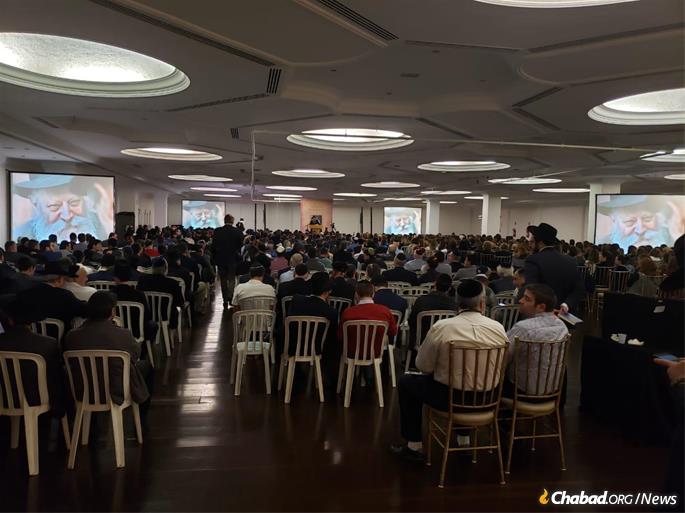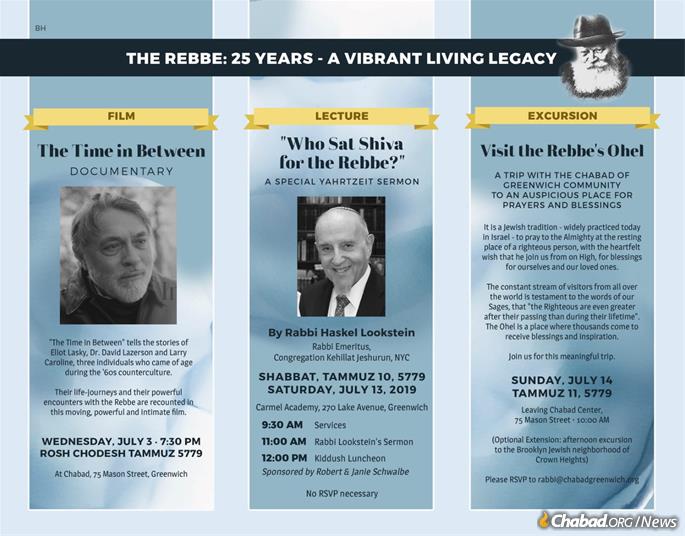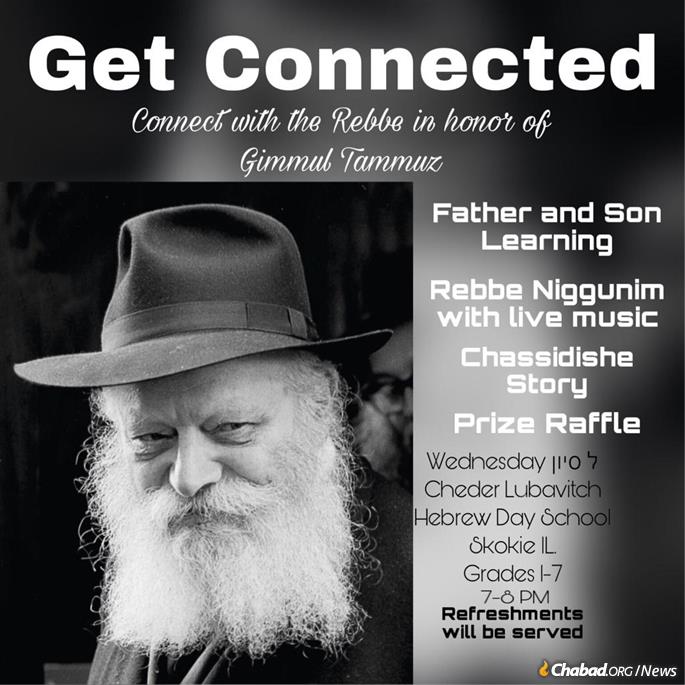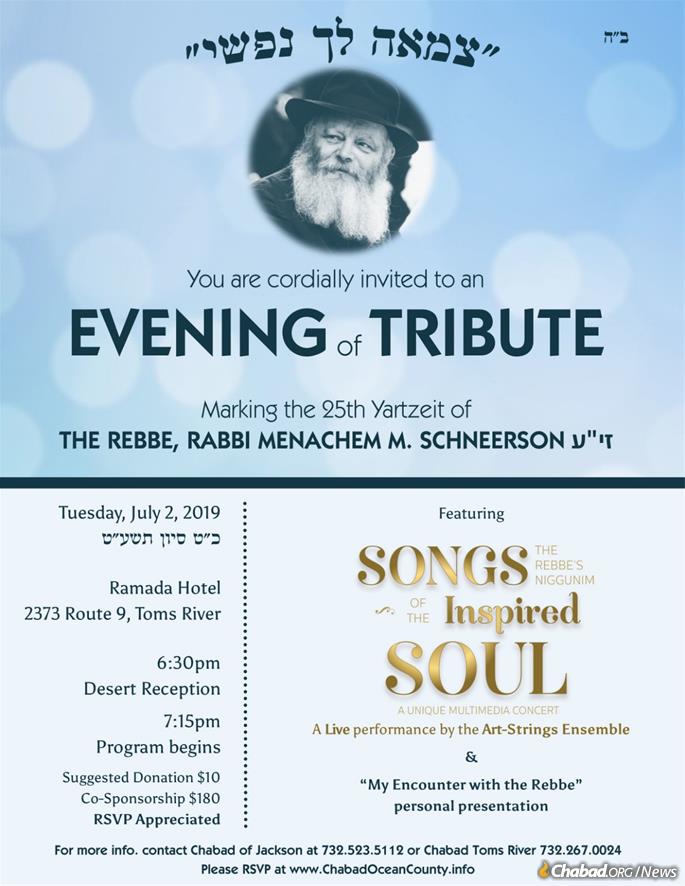All across the globe—from the more than 50,000 visitors expected at the Ohel in Queens, N.Y., to gatherings and study groups in community centers, synagogues, camps and private homes—people from all walks of Jewish life, in communities large and small, are coming together this week and next to mark the 25th anniversary of the passing of the Rebbe, Rabbi Menachem M. Schneerson of righteous memory. As the yahrtzeit, the third day of the Hebrew month of Tammuz, falls on Shabbat this year—Saturday, July 6—events are taking place before, on and after the actual date.
In keeping with the Rebbe’s lifetime goals and teachings, millions of people throughout the world will be participating in prayers, lectures, gatherings, tributes and the additional performance of good deeds in the Rebbe’s memory.
Rabbi Elie Mischel of Livingston, N.J., often talks about the Rebbe and his impact from the pulpit of the Synagogue of the Suburban Torah, a Modern Orthodox congregation. Mischel sums up the Rebbe’s impact this way: “The Rebbe was not only the Rebbe of Chabad, but also the Rebbe of the entire Jewish people.”
“The Rebbe’s concern transcended the specific needs and issues of his devoted Chassidim and extends to every last Jew in the world,” he says. “The Rebbe was truly the manhig hador, the ‘leader of the generation,’ and his legacy remains essential to all Jews.”
In California, the dozen Chabad Houses that comprise Chabad of Conejo Valley and Ventura County will be jointly hosting “An Evening of Unity and Inspiration” on July 10, which will unite a cross-section of people from all Jewish backgrounds.
“There is so much doom and gloom and friction in the world, but the Rebbe taught us to look on the brighter side and see the good in everyone,” says Rabbi Yitzchok Sapochinsky, director of Chabad of Westlake Village, Calif. “He believed in each individual, and we need to believe in ourselves.”
The power of positivity and the Rebbe’s thoughts on the subject are at the heart of a new book, Positivity Bias by Rabbi Mendel Kalmenson, being released in time for Gimmel Tammuz. Kalmenson will be one of the keynote speakers at the “Evening of Unity and Inspiration.” Also speaking is Salvador Litwak, a Hollywood screenwriter.
Like many other communities, the Southern California program is being held under the banner of “One Heart, One People.” That banner, says Sapochinsky, exemplifies what the Rebbe was all about: being one. “We are trying to bring everyone together under one roof. At the core, we are one people, and the Rebbe taught us that.”

A display of unity will also be seen down under as a standing-room-only crowd in Sydney, Australia, comes together on July 4 to remember the Rebbe during a community farbrengen. Rabbi Simon Jacobson, the N.Y.-based author of Toward a Meaningful Life and other works will join them and speak on “What Is the Secret Behind Chabad’s Success? Five Transformative and Enduring Lessons From the Rebbe.”
According to Rabbi Elimelech Levy, director of Chabad Youth New South Wales, “Gimmel Tammuz is about the Rebbe and his enormous contribution to Jewish life, and by extension, humanity throughout the world. Rabbi Jacobson is world-renowned for his eloquence and ability to both share deep insights into the Rebbe’s teachings, as well as tell fascinating stories of the Rebbe and his great compassion—stories that truly resonate with people and inspire them.
“We all get caught up in the day-to-day grind of life and rarely have the chance to be deeply inspired,” continues Levy. “We hope that through Rabbi Jacobson, we will be able to bring people from all walks of life and give them the chance to be inspired by the Rebbe’s work.”

50,000 Expected at the Ohel
The biggest gathering is expected at the Ohel in Queens, N.Y., the resting place of both the Rebbe and his father-in-law—the sixth Lubavitcher Rebbe, Rabbi Yosef Yitzchak Schneersohn—as some 50,000 men are expected over the week.
Throughout the year, hundreds of thousands of individuals, both Jews and non-Jews, frequent his resting place seeking blessings, spiritual guidance and inspiration. In addition to personal visits, the Rebbe’s resting place annually receives more than 500,000 prayer requests via email and fax, and virtually all of the visitors this week will be bringing petitions for blessings from friends and family around the world.
While men have gathered at the Ohel to mark the Rebbe’s yahrtzeit every year since his passing, this will be the first time that a concurrent program is running for women and girls. Some 400 women are expected for the Shabbat of “Reflection, Connection and Action.” The program will be led by Chabad shluchas (“emissaries”) from South Africa, Australia and Hawaii, and will be held at a hotel a few miles from the Ohel.

Focus on Universal Kindness and Social Justice
Though he is known for his work in ensuring Jewish continuity and his love for the Jewish people, the Rebbe also made a significant mark on the world as a whole. His dedication to children with special needs—he advocated for the term years before it became part of the common lexicon—and his focus on education, welfare and those in the military who defend their countries earned him respect from world leaders. He was awarded a Congressional Medal and the U.S. National Education and Sharing Day was established in his honor.
As such, the Rebbe’s thoughts on social justice are front and center of a new book being issued on July 6 as part of the Gimmel Tammuz observance. Social Vision, the Lubavitcher Rebbe’s Transformative Paradigm for the World by Philip Wexler, with Eli Rubin and Michael Wexler, highlights many of the Rebbe’s thoughts on improving the world.
Online, the Rebbe’s visionary approach to many of the social questions and challenges faced by society has been made available in one place for the first time. A new section of Chabad.org combines hundreds of transcripts, clips of original footage and personal correspondence of the Rebbe, highlighting how he applied the deep wisdom of Chassidic philosophy to real-world issues.

Among the topics addressed are mass incarceration, the importance of renewable energy and the imperative of transforming public education for the greater good.
This is, of course, in addition to the abundance of teachings and stories that will be studied and viewed this week at TheRebbe.org, Jewish.tv and Chabad.org.
In the 25 years since his passing, the Rebbe’s influence continues to grow—extending to an ever-increasing number of people from across the religious and political spectrum. Writing this week in Tablet magazine, author Liel Leibovitz articulates the importance of learning and adopting what the Rebbe has to teach, in principle and in practice.
“We need to follow in the footsteps of our elders,” . . . whoever those elders might be, writes Leibovitz, “and listen to the Rebbe.”
“The lesson he bequeaths us isn’t an easy one to learn, “concludes Leibovitz, “but it’s one we can’t afford to ignore. For Jewish life in America, more imperiled now than ever before, to continue, we need to relearn how to love—each other, ourselves, and our tradition.“
“It takes a very great rabbi to teach us that. “


(Source: Chabad.org)












2 Responses
Oh! So this article is about the Lubavicher Rebbe! Why doesn’t it say that in the headline?
Which “Rebbe”?